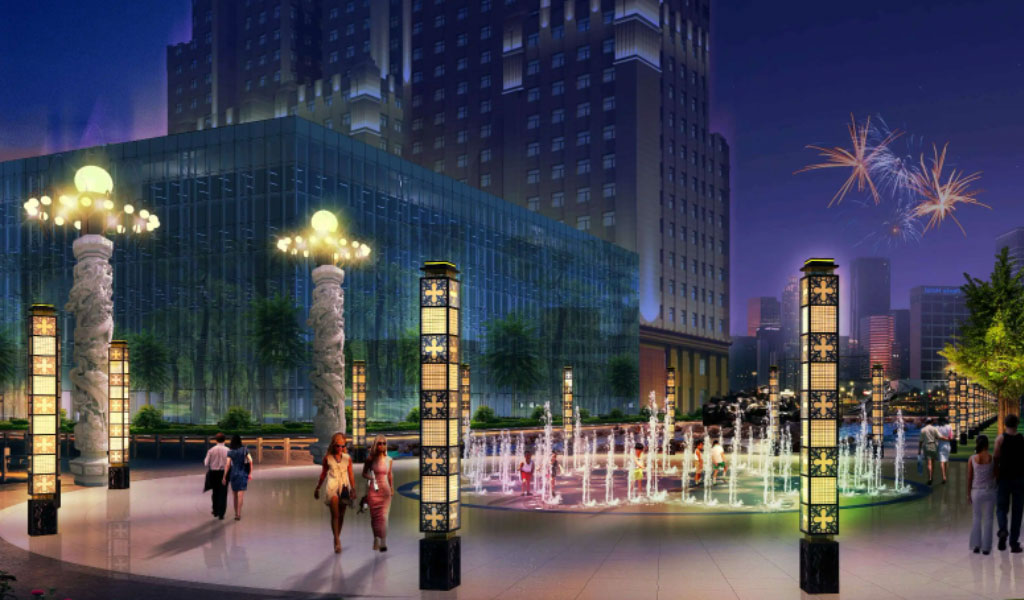
Lighting is very important to us. An estimate from the US Energy Information Administration confirms this: The electricity we use for home lighting (129 billion kilowatts, or 9% of total electricity consumption) is equivalent to washing and drying The combined power consumption of drying clothes, using the computer, and cooking.
However, most of this energy is wasted. Incandescent bulbs are notoriously inefficient, with only about 5% of their output being converted into light energy and the rest into heat. Light-emitting diode (LED) lighting technology is nearly 50% energy efficient, and by implementing more efficient solutions based on this technology, lighting power consumption is expected to be reduced by about 40% by 2030.
Smart LED lighting is a way to reduce energy consumption and closely match the lighting supply and configuration to the actual needs of medium to high power applications in offices, factories and public buildings.
The fall in LED prices is the key to spurring its adoption. At the same time, as society has generally recognized the environmental impact of traditional lighting’s historical inefficiency and waste, government regulations on lighting standby power and efficiency have become increasingly stringent.
Compared to incandescent lighting, LED lighting brings a fundamental improvement in using lower power and converting the output into light energy rather than heat. However, it is now crucial to combine solid-state lighting technology with innovative drive solutions to comply with regulations and provide features such as efficient power management and dimming.
LED Lighting Market
The development of the construction industry is an important driving force for the development of LED lighting. According to the research of Research and Markets, the construction industry constitutes a major part of the LED lighting market. Refurbishment is also an important driver, in fact, the research firm believes that refurbishment will be the fastest growing segment of the LED lighting market until 2023.
Indoor lighting (including residential, factories, public buildings and offices) is the highest revenue segment of the LED lighting market. But outdoor lighting will be the fastest growing, with the biggest driver being improvements in road lighting as local governments try to improve visibility while keeping costs in check.
According to TrendForce (a subsidiary of LEDinside), the market value of LED lighting in 2017 will reach 33.1 billion US dollars, and the penetration rate of LED lighting will reach 52%. According to data from LEDinside, LED lighting accounts for 23% of the overall European lighting market, ranking first among all regions in the world. The United States and China ranked second and third respectively. Asia Pacific may be expected to be the fastest growing region due to a large number of infrastructure projects.
Smart Solutions For Energy Efficient Lighting
Unlike incandescent light bulbs, which can only be connected to mains power, LEDs are low-voltage devices that require a power source that can provide either constant voltage (CV) or constant current (CC). These power supplies have a substantial impact on the overall efficiency of a lighting solution and are therefore subject to the same scrutiny as LEDs themselves, especially when it comes to backup power supplies.
A large part of the market for LEDs is to advance (or replace) traditional lighting, while the versatility and relatively small size of LEDs allow them to be used where incandescent solutions cannot be implemented. However, to fit LEDs and associated power supplies in these small, compact spaces requires efficient, compact power supply designs.
One challenge for LEDs is to provide dimming over the full brightness range while ensuring good light quality. The “strobe” caused by many solutions can cause some problems, especially in environments where cameras are used for sensing, such as factories and in-vehicle systems on the road soon.
Not only are designers faced with the challenge of providing energy efficient, widely adjustable, compact, flicker-free lighting solutions, consumers and installers are also expecting to see a similar drop in power supply prices similar to LED prices.
25-100 W is one of the most common wattages for LED lighting solutions. A common approach to this is to use a two-stage conversion, initially reducing and regulating the supply voltage with the help of a power factor correction (PFC) stage that provides a constant voltage and a control signal to the microcontroller (MCU) ( including dimming control). The second stage converts the regulated voltage into LED supply current, taking into account any dimming requirements from the MCU.
However, to meet these relatively complex requirements of modern LED lighting, innovative semiconductor control solutions are required. Leveraging its knowledge in developing energy-efficient power solutions, ON Semiconductor has introduced two IC products that take energy-efficient lighting solutions a big step forward and meet today’s competitive market demands.
ON Semiconductor’s FL7740 (primary-side regulation and PFC) and FL7760 (DC-DC step-down) offer simplified topology and reduced size and cost with a limited BOM. When used together, the two provide precise CV/CC regulation and support both analog and pulse width modulation (PWM) dimming.
The FL7740 requires few external components and consumes less than 0.15W in standby mode, a key specification for smart lighting that easily meets regulations such as Energy Star.
The FL7760 offers a wide analog dimming range of 5% to 100%, making analog dimming technology a viable option for solid-state lighting designers for the first time. It also supports PWM dimming from 0 to 100%, but the inherent flicker and audible noise issues make it less than ideal. However, what makes the FL7760 unique is its ability to seamlessly combine analog and PWM dimming to cover the 0 to 100% range without flicker or audible noise, which is a huge improvement.
With the help of advanced semiconductor technology, LED-based smart lighting is not only feasible, but also easier to implement, more efficient, smaller in size and lower in cost. And there is the potential to save tens of billions of kilowatt-hours of electricity while improving the working and living environment, a potential that will become a reality in the near future.






